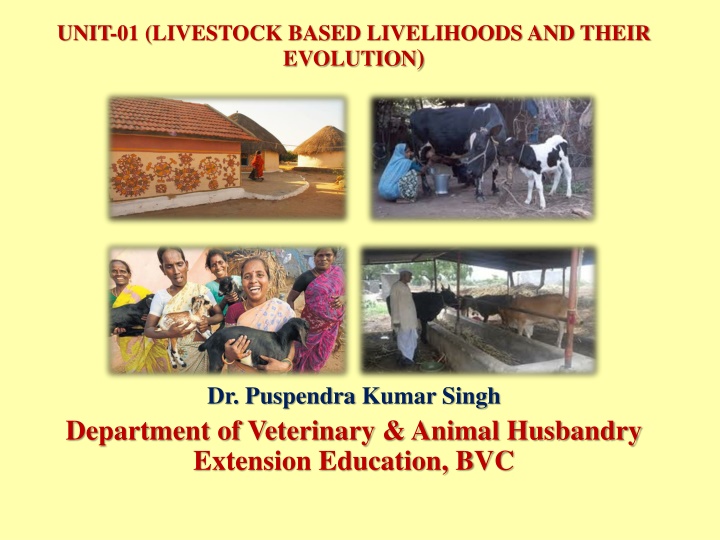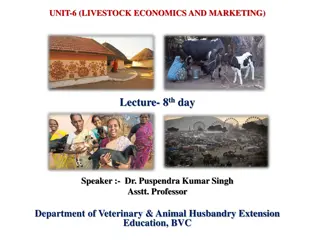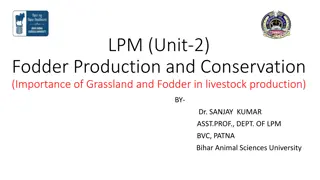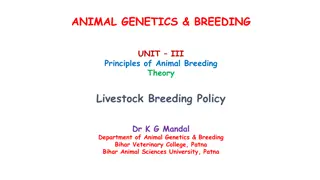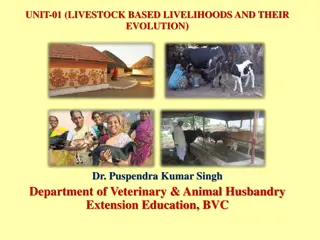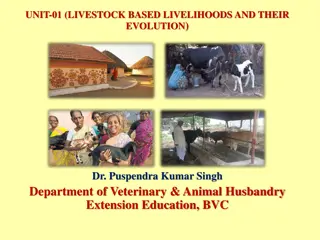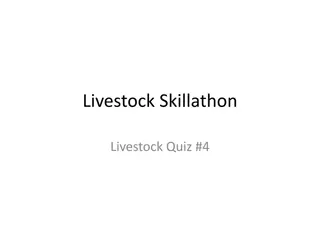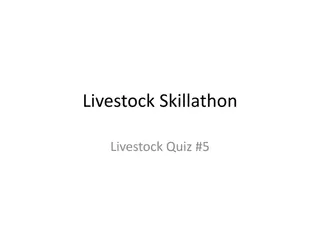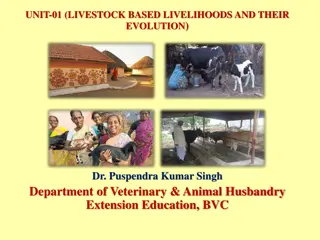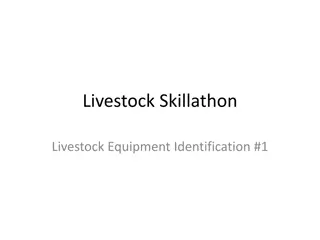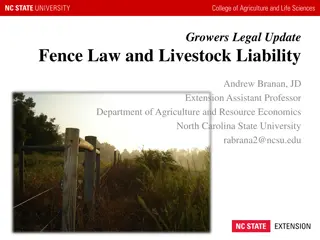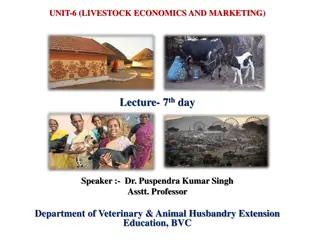Evolution of Livestock-Based Livelihoods
Livestock-based livelihood systems have evolved over time, with advancements such as collective farming and cooperative farming. While collective farming involves communal ownership of land and joint decision-making, cooperative farming allows individual land ownership with collaborative farming practices. These systems differ in ownership structures, profit distribution, and decision-making processes. Collective farms offer social services to members but lack incentives typically associated with individual land ownership. These models, once prominent in Eastern Europe and China, showcase unique approaches to agricultural production and community management.
Download Presentation

Please find below an Image/Link to download the presentation.
The content on the website is provided AS IS for your information and personal use only. It may not be sold, licensed, or shared on other websites without obtaining consent from the author.If you encounter any issues during the download, it is possible that the publisher has removed the file from their server.
You are allowed to download the files provided on this website for personal or commercial use, subject to the condition that they are used lawfully. All files are the property of their respective owners.
The content on the website is provided AS IS for your information and personal use only. It may not be sold, licensed, or shared on other websites without obtaining consent from the author.
E N D
Presentation Transcript
UNIT-01 (LIVESTOCK BASED LIVELIHOODS AND THEIR EVOLUTION) Dr. Puspendra Kumar Singh Department of Veterinary & Animal Husbandry Extension Education, BVC
Collective Farming This is another farming system which was introduced in U.S.S.R. Sometime after 1917 revolution. This system replaces the feudal system of farming enforced by a communist regime. The revolutionary regime decided that in place the feudal lords owing the land, henceforth the village community, as a whole would own the land.
Cooperative farming refers to an organisation in which: Each member-farmer remains the owner of his land individually. But farming is done jointly. Profit is distributed among the member-farmers in the ratio of land owned by them. Wages distributed among the member-farmers according to number of days they worked.
The community itself would take decisions about production and itself would operate upon the land it possessed. The land and other production assets are held jointly by the village s society There is no individual ownership. The village community as a whole constitutes the general body of the collective farm. Its members out of themselves elect an executive board which manages the farm. Some nominees of the Government also represents on the executive board.
The board plans the crop production arranges for various inputs to be used on the farm and also looks after the disposal of the crops produced. It also keeps in touch with the government for seeking advice and guidance. The board also makes arrangement for providing various social services like education, health care and entertainments to its member Member of the village community work as labourers on the collective farm.
Each worker is paid according to the standardized work put in by him. However, we must note the whatever the workers get is not their wages. They do not act as wage earners. They share according to the works. As there is no individual ownership of land the incentive generated by ownership is missing. In order to motivate workers to put in their best other types of incentives in the forms of money and in kind are offered to the worker. No doubt, the collective farms have all the advantage of commercial farms. However they are not popular in open societies. They represent a political system and are confined to the regimented economics of Eastern Europe and China.
Distinguish between Co-operative farming & Collective Farming
Cooperative farming Cooperative farming Collective farming Collective farming A group of farmers form a co-operative society by pooling their resources voluntarily for more efficient and profitable farming. It is based on social ownership of the means of production and collective labour. Co-operative societies help farmers, to procure all important inputs of farming, sell the products at the most favourable terms and help in processing of quality products at cheaper rates. Yearly targets are set by the government and the produce is also sold to the state at fixed prices. Co-operative movement has been successful in many western European countries like Denmark, Netherlands, Belgium, Sweden, Italy etc. Collective farming was introduced in erstwhile Soviet Union
